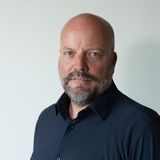Today’s image maker doesn’t feel restricted by the limits of her/his/their medium. The maker is a /maker: the photographer who films, the filmmaker with a podcast or the writer who vlogs. While most makers were recently “trapped” in their disciplines, the new generations know no better than to tell their stories in different ways and they are masters of many techniques. What unites them: their work often has a social impact and they engage in visual storytelling. The story determines the medium. In the Visual Storytelling series, we investigate the expanding universe of visual storytelling. The /makers tell their most beautiful, impactful stories and show how they work. During this first meeting, moderator Lars Boering will discuss their work with centipedes Eefje Blankevoort and Kadir van Lohuizen and talk about one of the most important phenomena of our time, refugees. And we call with Whitney Johnson, director of Visuals and Immersive Experiences at National Geographic, about their state of the art multimedia projects.
Eefje Blankevoort
Eefje (1978) is co-founder of Prospektor journalism agency in Amsterdam. She studied History and Political Science at the University of Amsterdam. Between 2002 and 2006 she regularly spent time in Iran where she studied and worked on her book Stiekem kan hier alles (You can do anything here in secret). Since then, Eefje has developed into an all-rounder in journalism, writing articles and books, as well as creating interactive projects, exhibitions and documentary films. Besides her work as a journalist and documentary maker, Eefje is a creative producer helping others to find their stories from podcast series to films, exhibitions and transmedia projects. Eefje’s most recent transmedia project is Shadow Game.
Shadow Game is a project about teenage refugees looking for protection in Europe that consists of a feature-length documentary, a web series, a photo series, educational program, impact campaign and an adventure game – in development. The project is made by directors Eefje Blankevoort and Els van Driel in close collaboration with translator and researcher Zuhoor al Qaisi and the protagonists themselves.
Kadir van Lohuizen
Kadir van Lohuizen (The Netherlands, 1963) has covered conflicts in Africa and elsewhere, but is probably best known for his long-term projects on the seven rivers of the world, the rising of sea levels, the diamond industry, migration in the Americas, Wasteland, where he investigated (mis)management of waste in six mega cities and the Arctic, the new frontier. Kadir has received numerous prizes and awards in photojournalism. In 2000 and 2002 Kadir was a jury member of the World Press Photo contest and was on the supervisory board of the World Press Photo foundation for eight years. He recently published his latest book ‘After us the deluge’ on the human consequences of the rising sea levels. Kadir is a frequent lecturer and photography teacher and is based in Amsterdam.
In Where will we go?, Kadir looks at the human consequences of the rising sea level. Due to climate change the glaciers the world over are retreating and the ice of Greenland and Antarctica is melting at an increasing pace. Should humanity start preparing for the biggest displacement of mankind in known history? Where will we go? highlights both the immense complexities associated with the forced displacement of people, as well as the human rights implications.
In Via PanAm, Kadir investigates the roots of migration in the Americas. By seeking answers to questions such as ‘Why do people migrate? Where to and for what reasons? What is the fate of the different indigenous populations in the Americas?’, he taps into a phenomenon that is as old as humanity but is increasingly portrayed as a new threat to the Western world.








